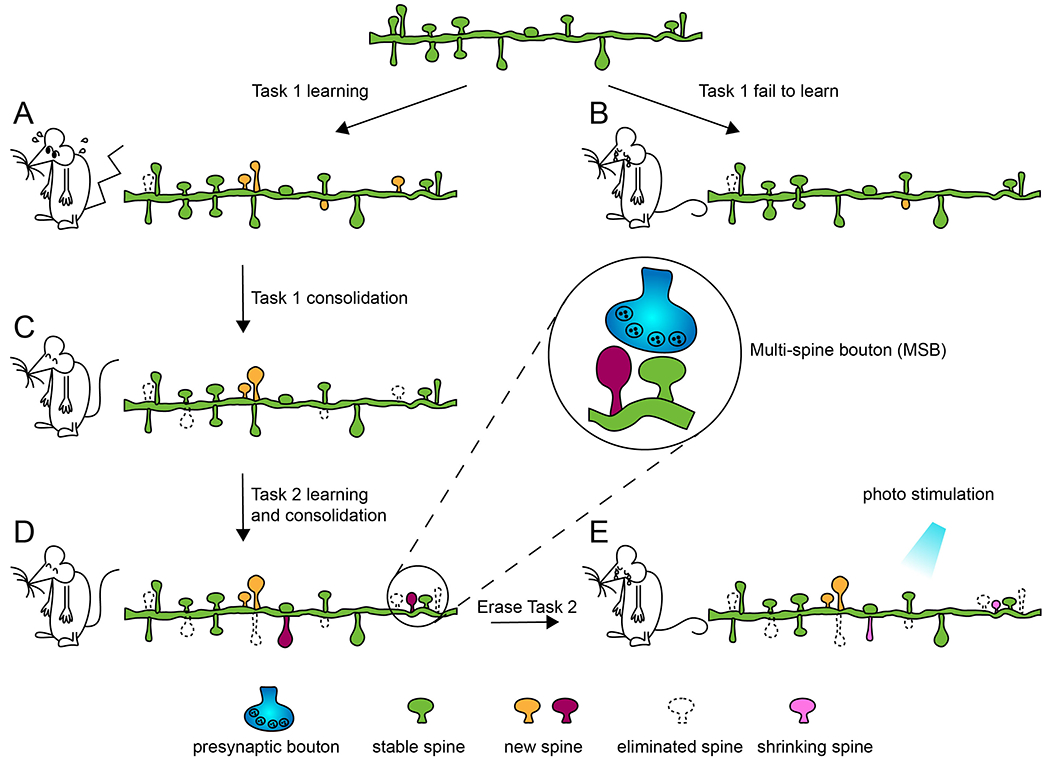Figure 1.

Illustration of learning-related spine dynamics.
The animal is trained on a learning task (Task 1). (A) Learning is accompanied by elevated spine formation beyond the basal level. (B) If the animal does not learn, basal level spine dynamics persist. (C) Consolidation of learned Task 1 preferentially stabilizes learning-related new spines and eliminates some pre-existing spines at an elevated rate. Thus, learning only transiently increases spine density, but rewires the neural circuit. Furthermore, new spines tend to emerge in clusters, which likely promotes their subsequent survival. (D) Learning and consolidation of a different task (Task 2) induces the formation and stabilization of a new set of spines. (E) Selectively shrinking Task 2-related spines by optogenetic actuators disrupts Task 2 performance. Inset: a new spine shares the same presynaptic bouton with an existing spine, resulting in a multispine bouton (MSB).
